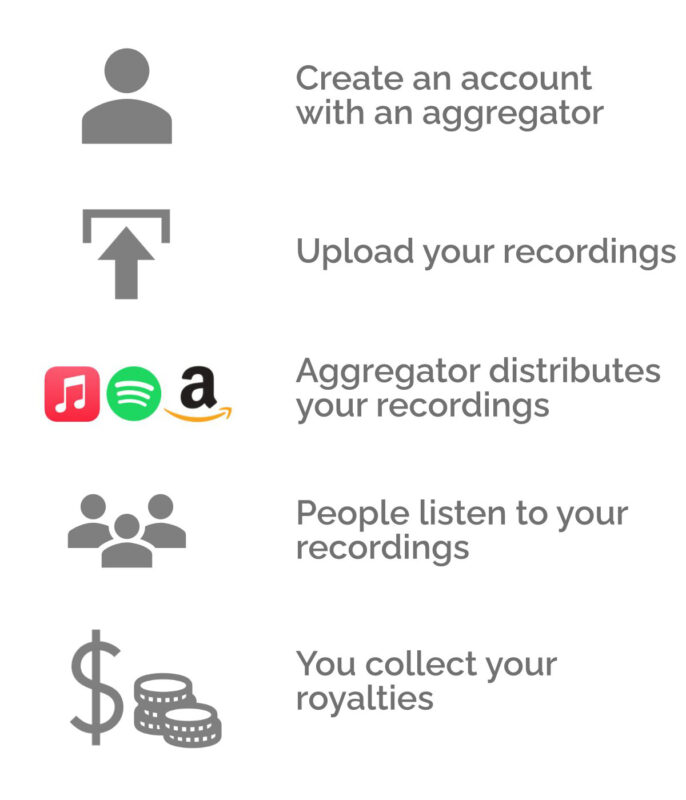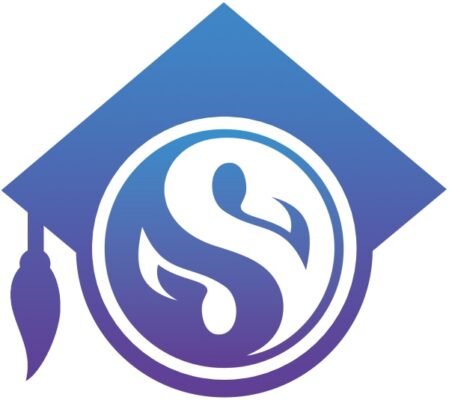

Enlightened Audio Education
Lesson 22
How to get your recording on Apple Music, Spotify and Amazon
Publishing your beautiful recording on music streaming services such as Apple Music and Spotify is a fairly easy one-step process.
When I say “one step”, what I mean is that you don’t need to submit your recording to each and every streaming service individually. Instead, you will upload your recording via an “aggregator”.
An aggregator is a company that distributes your recording to a large number of music services simultaneously. Most aggregators will distribute your recording to all the big players in the digital download industry, including Spotify, Apple Music, Amazon Prime Music, Google Play, Pandora, Deezer, Rhapsody and many more.

Which aggregator should you choose?
In my experience, there’s not a huge amount of difference between aggregators in terms of how they distribute your recording. They will all distribute your recording to roughly the same cross section of services.
Quick Tip: Given that Spotify, Apple Music and Amazon Prime Music will yield the vast majority of your revenue, do not be swayed by the hype of any aggregator that claims to distribute your recording to more digital music stores than others. An aggregator that distributes to 100 services will probably offer no greater benefit than one that distributes to just 10 services, simply because those extra 90 services will be tiny compared to the likes of Spotify and so on.
Here are a few of the most popular aggregators:
- CD Baby: www.cdbaby.com
- TuneCore: www.tunecore.com
- SongCast: www.songcast.com
- Landr: www.landr.com
- Catapult Distribution: www.catapultdistribution.com
What do aggregators charge?
Most aggregators charge a one-time fee of $20 – $50 when you first upload your recording. Some will then charge you ongoing fees based on the number of recordings you have uploaded, whereas others will charge a flat monthly fee.
For example, at the time of writing SongCast charges a one-time fee of $19.99 when you upload a new recording. They then charge you $5.99 per month to keep your account active (regardless of how many recordings you have uploaded).
Note that some aggregators also take a small percentage of your earnings in addition to their usual fees.
Take your time exploring various aggregators and their fee structures. As you do, consider how many recordings you think you might release over the next year or three and factor this into your cost calculations.
If you are planning on releasing a number of recordings, the costs might seem to pile up when you look at some aggregators, but keep in mind that you are going to be earning money from your aggregator too. I’d be very surprised if you didn’t earn more than you spend. Think of it this way, aggregators would not and could not exist if they cost more to use than they return to their customers, financially speaking.
You don’t need bells and whistles
Some aggregators will try to entice you into spending a little extra on promotional services that help to boost your profile and promote awareness of your recording. I’d generally advise against these kinds of promotional add-ons. They might work (I stress, “might”) for bands who have the budget to spend on this kind of marketing. But as an independent artist selling spoken word recordings, it’s unlikely that money spent on promoting your recording via your aggregator will yield a good return on investment.
The most important service that your chosen aggregator will perform for you is getting your music onto the various streaming services and collecting your royalties for you.
VERY IMPORTANT – publish responsibly!
There is one thing that you must be very aware of when you distribute your recording through an aggregator.
Many aggregators offer a service called “Sync Licensing” or “Content ID Matching”. When you go through the process of uploading your recording to an aggregator, keep your eyes peeled for any mention of these services. Avoid them. Disable them. Untick any boxes that offer them!
Sync Licensing is a service that should only be used by bands or musicians. It should never be used by people who create spoken-word recordings, unless your recording contains unique background music that was composed for you and you alone.
Unfortunately I have found that the inadvertent use of Sync Licensing and Content ID Matching is something that creators of hypnosis and meditation recordings do all too often. I can’t stress enough how important it is to avoid Sync Licensing. If you use Sync Licensing, whether intentionally or not, you may cause other people to receive false copyright claims on their recordings. For a full explanation of how this happens please refer to this supplemental lesson: https://enlightenedaudio.com/publish-your-recording-responsibly-prevent-false-copyright-claims
Mmmm…royalties
Getting a monthly payment for doing absolutely nothing? What’s not to love?
Your aggregator will tally up all the sales you made across all the various digital download services and present you with a monthly report and a payment. Most will give you detailed information about how many plays you achieved, how many downloads you sold, and a breakdown of how much you earned from each individual service.
A quick reminder – there are even more ways for you to share your recording with the world!
You’re not limited to distributing your recording through music streaming services or selling downloads on your website. Now is a good time to revisit the earlier lesson titled, “More great distribution opportunities for meditation and hypnosis recordings”.




